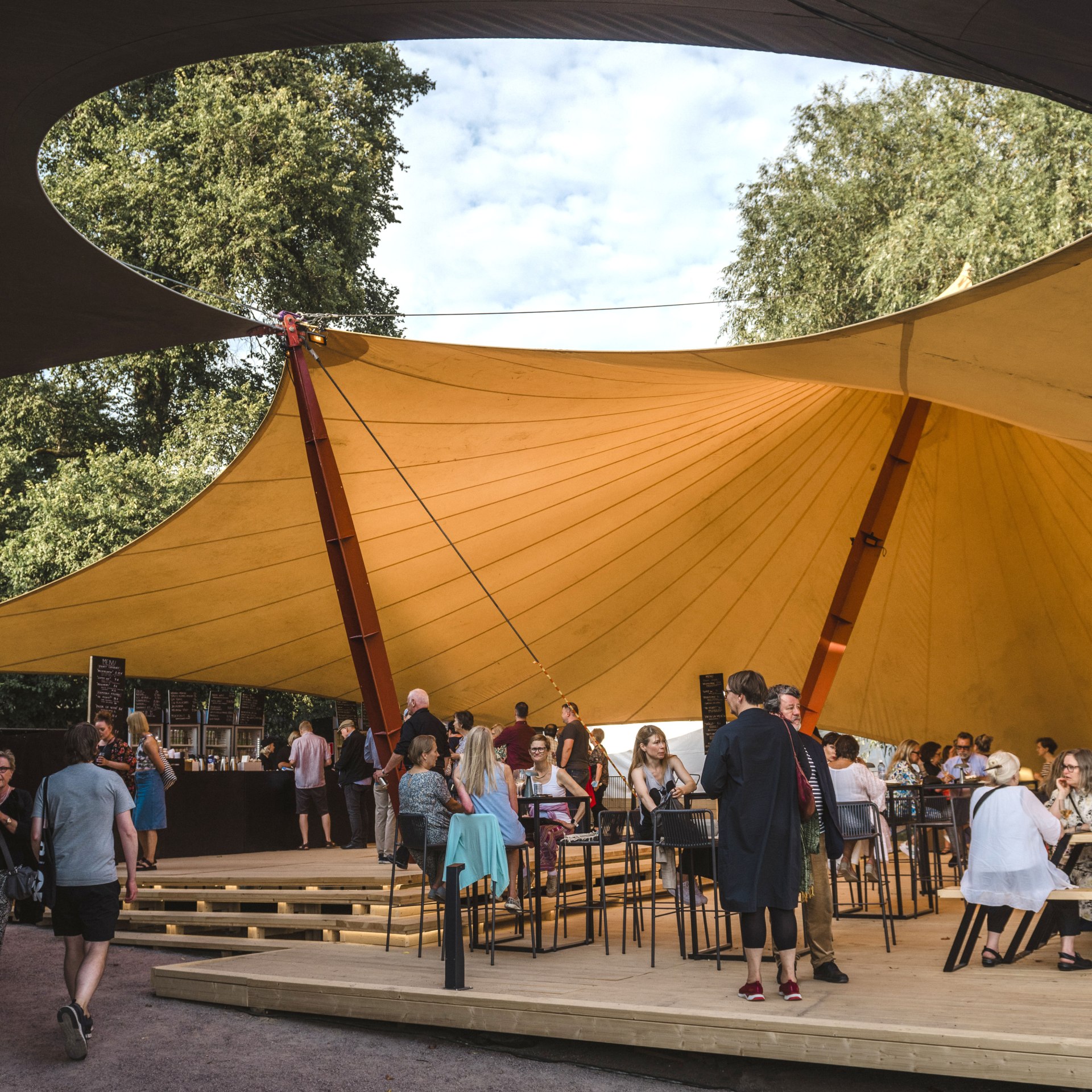JKMM has designed the new Huvilanranta, an urban space open to all

Our new installation for Huvilanranta Festival brings a unique experience open to all in eastern downtown of Helsinki.
“Huvilanranta is a 150-metre wooden gift to the people of Helsinki, and will bring together people, sounds, flavours, foliage, and moonlight. Is it an installation, a bower, or a catwalk? Come and find out,” says JKMM Architects’ founding partner and lead architect Teemu Kurkela.
Located next to the iconic venue Huvila, Huvilanranta area is designed by JKMM and operated by Helsinki Festival and will be open to the public offering a free and diverse programme and serving customers from lunch until late in the evening for the duration of the Helsinki Festival, from 12 August until 4 September.
Temporary and recurring, inclusive and community-based, the centrally located Huvilanranta is an exemplary part of infrastructure for happiness, also contributing to improving urban culture and landscape.
Wooden gift to the people
Like Huvila, the modular Huvilanranta will be rebuilt from the same elements every year for the Helsinki Festival. The new festival park consists of a large timber-panelled terrace, event structures, tent pavilions, aluminium-clad kiosks, long wooden tables and benches, and lighting suitable for the early autumn evenings. Perhaps the most important part of all this is the over 100-year-old protected maple foliage.
The robust, durable and finely sawn Lappish pine planks have been left untreated for both environmental and appearance reasons. The wooden pier naturally turns gray over the years, bringing more character to the area and blending in even better with its surroundings. Everyone’s shared terrace will be slowly turning into the city dwellers’ wooden duckboards.
The container-shaped kiosks designed for Huvilanranta will also be used for other events by the City of Helsinki. The containers are designed so that the elements can be stacked on top of each other if necessary.
In order to fit the architecture around and under the diverse living nature, the design work made use of a laser-scanned 3D point cloud model of the trees in the area. With around 350 million measured points, the free-form foliage could be brought into the design, and modular structures and citizens fitted into the tree canopy without damaging the natural environment.
Gateways to cultural experiences
In addition to the new Huvilanranta, the Helsinki Festival needed gates that would draw visitors in for cultural experiences. Gates have been placed at key locations for various events in Huvilanranta, the Musiikkitalo and the Dance House Helsinki. The concept had to be flexible in terms of location and size, the gates also had to serve as a visual symbol of the festival at different scales.
The gate concept was developed together with the festival. The result is as experiential, light, and adaptable as possible. The gates are built from a large canvas, under which you enter the world of cultural experience. The pattern printed on the canvas of the gates is made up of artworks specially created for the Festival.
This year, the artwork is a reinterpretation of the Finnish ‘ryijy’ tradition using artificial intelligence by Irish crypto-art pioneer Kevin Abosch. Next year it could be something completely different.
Read more abou the urban festival here.